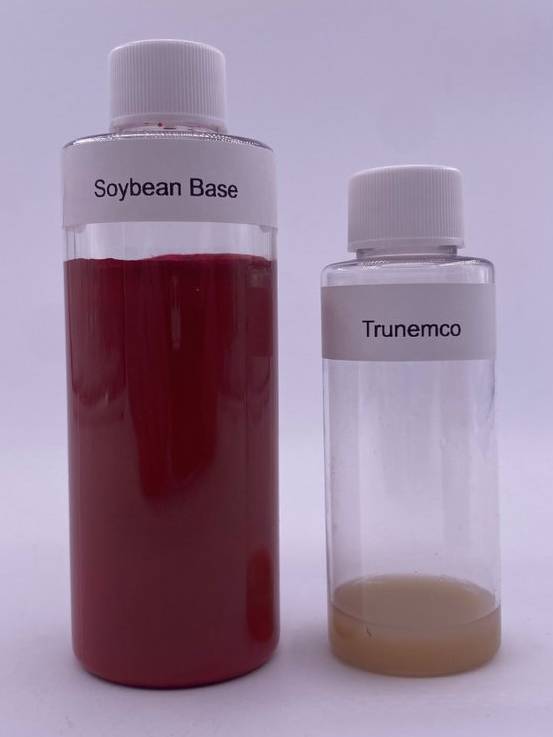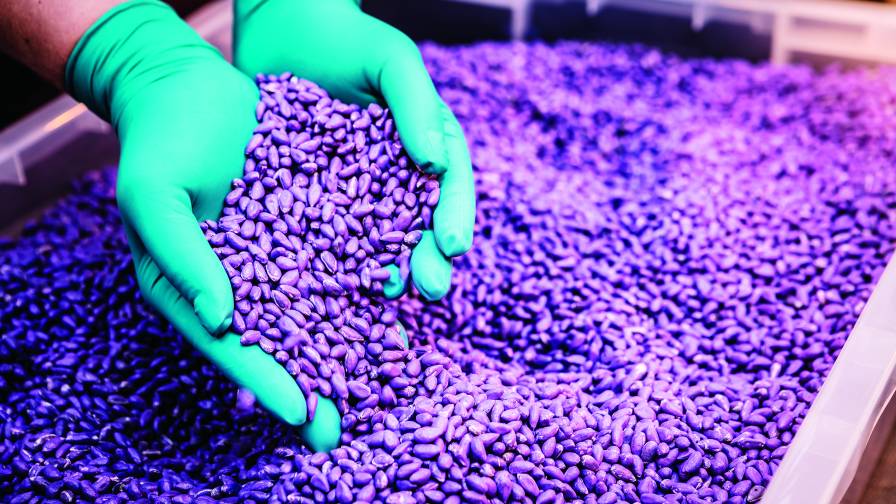Seed Treatments Among ‘Fastest Growing Segments’ in Crop Protection Market
In the beginning there is a seed. By the time those spores get into the ground they’ve been treated with a variety of products designed to help ensure a healthy crop. Despite challenges posed by COVID-19, regulatory agencies, and public opinion, providers are optimistic and enthusiastic about the future of this segment.
“2021 has been a strong year overall for the North American seed treatment industry,” Martin Horrocks, Director, Seed Treatment, BASF Agricultural Solutions North America, told CropLife. “The market has grown overall; rising commodity prices and improving farmer income levels have led to a stronger willingness to invest in seed treatments to protect the seed investment.”
Mike Burbach, Seed Treatment Customer & Brand Marketing Manager, Nufarm, used a single word to describe the company’s expectations for 2021: “Optimistic.” He followed that up with, “The market continues to grow in most segments due to demand for higher yields in corn, cotton, and soybeans.”
One reason the seed treatment market continues to expand — it works.
“The seed treatment industry continues to be one of the fastest growing segments within crop protection market, driven by growers’ awareness of seed applied technologies’ benefits for protecting and establishing healthy seedlings and need to improve productivity,” says Prabdeep Bajwa, Corteva Agriscience Global Portfolio Leader – Seed Applied Technologies (SAT). “Additionally, the SAT providers are continuing to invest in R&D, developing and making improved high value products available like diamide chemistry for seed treatments.”
Expectations Vs. Reality
Much of ag purchasing is dictated by commodity prices, and with the ongoing uptick in pricing, growers have been willing to invest in their operations.
“When we were putting together our 2021 plans, we were anticipating modest growth across North American,” Horrocks says. “We foresaw some price erosion as some older chemistries started to reach the latter stages of their patent life offset by the launch of some innovations in canola and cereals helping to create an overall, fairly low-growth environment. But market expectations have actually been surpassed in terms of overall market growth. It goes back again to more buoyant commodity prices driven by a range of macroeconomic factors as well as planted acre increases across major row crops, which were stronger than projected.”
Even the challenges that have plagued some parts of ag (supply chain disruptions) have had a positive effect.
“We anticipated a rebound in treated acres and a shift in crop rotation based on commodity pricing,” Burbach says. “For the most part, things held close to what we expected. Supply challenges across the market drove increases and allowed us to be opportunistic with our inventory.”
Everyone CropLife contacted had good things to say about the market.
“2021 was a great year for Syngenta Seedcare,” says Quinn Showalter, Head of Syngenta Seedcare in North America. “We continued to see growth on the backs of new products. Drivers of that trend included farmers’ willingness to invest in premium seed treatment products to drive yield and ROI.”
The Influencers
“Commodity price, farmer income, and farmer sentiment have all moved North coming into 2021, and that helps create a good tail wind for the market and adoption of seed treatment,” BASF Horrocks says. “We still see new innovations rising to the forefront in seed treatment, which is very pleasing to see.”
For a variety of reasons, the introduction of traditional pesticides has slowed in the past decade. That doesn’t seem to be the case for seed treatment.
“Being a R&D based organization that has brought to market several new products and active ingredients specifically for seed treatment in recent years, our biggest opportunity is continuing to demonstrate the volume of new technology to growers who have not used the new products yet,” Syngenta’s Showalter says.
The ability to tailor treatments to growers’ individual needs certainly makes them an easier sale.
“There have been a couple of significant trends driven by the push for higher yields,” says Kurt Seevers, Technical Development Manager, Verdesian. “First, applicators are using products targeted for the specific issues each producer faces. Second, seed appearance and flowability with the additional protectants applied have become issues. More applicators are using plantability agents or seed finishers to improve the flowability and the singulation with more precision planters.”
Innovations
Seed treatment providers continue to innovate. It’s not just about what’s on the seed; how those treatments are applied is also important.
“Seed applied technologies have become more complex, with multiple components being applied on a seed,” Corteva’s Bajwa says. “The coatings have expanded from traditional insecticides, nematicides, fungicides, and inoculants to increasingly include biologicals. To this end, the technique of assembling seed treatments onto seed has improved over time.”
A Changing World
“Seed treatments have repeatedly been shown to increase yields across major crops, and studies have also shown that they reduce the need for foliar sprays and the associated labor and fuel,” BASF’s Horrocks says. “They go through an incredibly rigorous series of approvals with the EPA and state regulators before they ever end up being used commercially. That said, there are certainly opponents of seed treatments, and as with all crop protection products, approvals and standards get tougher and tougher all the time. The bar to bring new chemistry to market continues to be raised, but that doesn’t deter the industry from staying fixated on trying to solve grower problems and do it with chemistry and biological solutions that are sustainable.”
Much like the pesticide side of the industry seed treatment providers have embraced the promise of biologicals.
“We are really in the beginning stages of understanding these product categories and what they can con-tribute, as well as their limitations,” Verdesian’s Seevers says. “Utilizing different methods of delivery takes the pressure off the limitations with seed load while still addressing areas of need. One other area that hasn’t seen much exploitation yet is on-the-go seed treatment. Application of products to the seed as it is planted is different from in-furrow treatment. On-the-go seed treatment doses only the seed, not the space in-between. It will be interesting to see whether this catches on.”
Challenges
“In the U.S. and Canada, one of the biggest challenges is the battle in the court of public opinion,” BASF’s Horrocks says. “Crop protection chemistries face extremely high public scrutiny, and seed treatments are not exempt. It is critical that the industry stewards use of these chemistries in the most responsible way, as well as educating about the extremely important role these technologies play in helping a grower raise a successful crop and meet the needs of a hungry world.”

Seed-applied Trunemco, nematode management technology from Nufarm, provides leading level nematode protection at ultra-low use rates, leaving space for every seed package. Photo Courtesy: Nufarm
That public scrutiny goes hand-in-hand with the increasingly challenging regulatory climate.
“Regulatory oversight of these new categories has followed how they are dealt with in other applications,” Verdesian’s Seevers says. “The biggest change may be yet to come as the rules around the regulation of biostimulants are finalized and adopted. It’s an interesting category that is different from the plant growth hormones and plant growth regulator categories. There are quite a few new modes of action such as helping the plant deal with abiotic stresses.”
Looking Forward
“We are projecting another strong year in 2022 — perhaps tempered a little from 2021, but still a positive growth story for North America,” BASF’s Horrocks says. “Commodity prices are looking to be strong in 2022, and that enables growers to invest in products that help them improve yields and profit.”
The realization of those improvements will continue as new products come to market.
“Corteva is continually innovating to deliver the best seed treatments that will help farmers protect their yield and the environment, that include both naturally derived and conventional synthetic seed treatments,” Bajwa says. “Integrated solutions that include genetics, traits, and seed treatments are needed to solve the productivity challenge in a sustainable manner.”
Once again, it all boils down to ensuring value.
“Higher commodity prices are giving growers the opportunity to expand what they do with their seed,” Verdesian’s Seevers says. “As long as the prices hold, there will continue to be more entries into the seed treatment market.”







